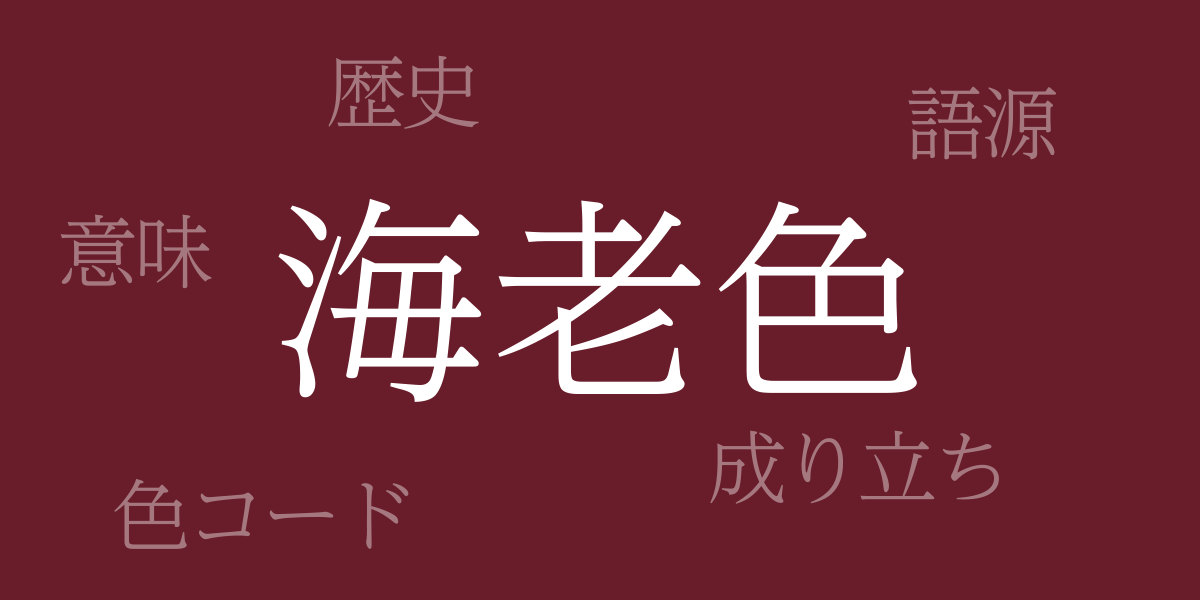The enduring beauty of Japan’s traditional colors captivates audiences worldwide, none more so than the rich ‘Lobster Color’ (海老色 – えびいろ). This deep hue has played a vital role in Japanese culture, art, and fashion. This article delves into the allure of Lobster Color, exploring its history, color codes, and its Western name, unraveling the stories hidden behind this color to rediscover its meaning and beauty.
About Lobster Color (海老色 – えびいろ)
Lobster Color (海老色 – えびいろ), as suggested by its name, resembles the reddish-brown hue of a lobster’s shell. It is a warm yet deep and vibrant color. In Japan, there is a culture of cherishing and incorporating natural colors into daily life. Lobster Color, inspired by nature, is used in clothing, everyday goods, and architecture, reflecting the Japanese value of integrating natural beauty into everyday living.
The History of Lobster Color
Lobster Color has a history dating back to the Heian period when it was already established as a traditional Japanese color. Favored by the nobility, it was used in prestigious garments and room decorations. Particularly in traditional performing arts such as Noh, Lobster Color has played a crucial role. Despite changing eras, the appeal of this color remains undiminished, continuing to influence modern design and artwork.
Color Code of Lobster Color
In the digital age, accurately representing traditional colors requires precise color codes. The color code for Lobster Color is as follows:
- HEX: #691C2A
- RGB: R:105 G:28 B:42
- CMYK: C:0.0 M:73.3 Y:60.0 K:58.8
Western Name for Lobster Color
The Western equivalent of Lobster Color is known as ‘Old Lobster’ or ‘Antique Brass.’ These names reflect the color’s resemblance to aged copper and the hue of lobster shells, offering a way to express Lobster Color in international design contexts.
Summary on Lobster Color
Lobster Color, as a symbol of Japanese tradition and nature, has been cherished through history. Its unique hue continues to inspire modern creators, and its color code is utilized in digital and graphic design to replicate its beauty. Knowing its Western names allows us to share the allure of Lobster Color with people around the world. Through this article, we hope you gain a deeper appreciation of Lobster Color’s rich allure, narrative depth, and cultural significance.

























